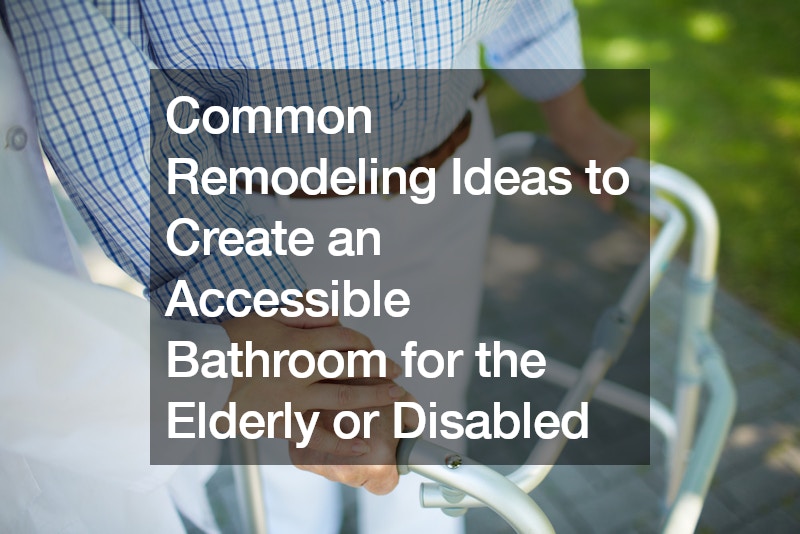It’s important to make sure that your bathroom is accessible to everyone in your home, and this may require you to hire local custom home builders. The professionals that you hire should have ample information about bathroom equipment for the elderly and other details like that. This way, it should be easy for them to make improvements that make it easy to follow bathroom safety tips in your home. They can also help you by finding the right elderly bathroom aids to add to your bathroom so that it’s accessible and safe for the elderly.
If your home’s bathroom is safe and accessible for everyone, including elderly loved ones that you’re living with, they’ll appreciate this a lot. That’s because they’ll be in a position to maintain as much of their independence as possible while living with you. In this case, you can be sure that they will feel cared for and quite comfortable. Remember to get any elderly safety products that may be necessary to improve the function of the bathroom even more. You can search on the internet to find out what the basic ones are and also use any specific considerations that the elderly person you live with has as a guide for the ones to get.
As we age, it’s common to experience more difficulty in completing everyday tasks. A common daily tasks that becomes increasingly difficult with age involves bathing. Maintaining the proper balance while bathing, or when getting in and out of the shower/bathtub can often be a difficult, and sometimes dangerous process for elderly, and disabled individuals. With the possibility of slipping on a wet bathtub or shower surface lurking, specific handicapped bathroom remodel designs exist in order assist those who are worried about sustaining an injury while bathing, or simply make the their bathroom more accessible and efficient.
Due to the their typical cramped environment, bathrooms present specific challenges for those who use wheelchairs, walkers or have other mobility and/or balance issues. Creating a bathroom that is accessible for those who have problems with mobility and balance can greatly improve the quality life within a home. A common handicapped bathroom remodeling design involves installing a walk-in bathtub or shower. A main feature of a walk-in bathtub involves a vacuum-sealed door, installed on the tub wall. This door opens and shuts to allow full, and easy access when getting in and out of the tub. The vacuum-sealed
door ensures that no water leaks out of the tub while it is shut, and it eliminates the need to climb over a ledge when getting in, and out of the tub.

Walk-in showers are also a common bathroom design that provides more accessibility. Walk-in showers are similar to walk-in baths — they both provide easy access in, and out of the bathing area. With a walk-in shower, there is no ledge on the base of the shower; instead, the shower base is a flat surface, and is typically almost at the exact level of the bathroom floor. The surface of the walk-in shower base is angled slightly towards the shower drain to ensure no water leaks out of the shower while in use. Bathroom remodeling companies will also typically include a weighted shower curtain to help keep water in the walk-in shower, and off of the bathroom floor.
Other accessibility ideas for bathroom remodeling include installing stability bars in the shower or bathtub, as well as in the bathroom itself — this provides added balance while moving about. You can also install accessible bathroom faucets. Accessible faucets must have lever handles or touch-operated features that can be used without grasping. Creating a handicapped bathroom can bring much joy and independence to those who have complications bathing safely by themselves. For more, read this link: azbathroomremodeling.com
